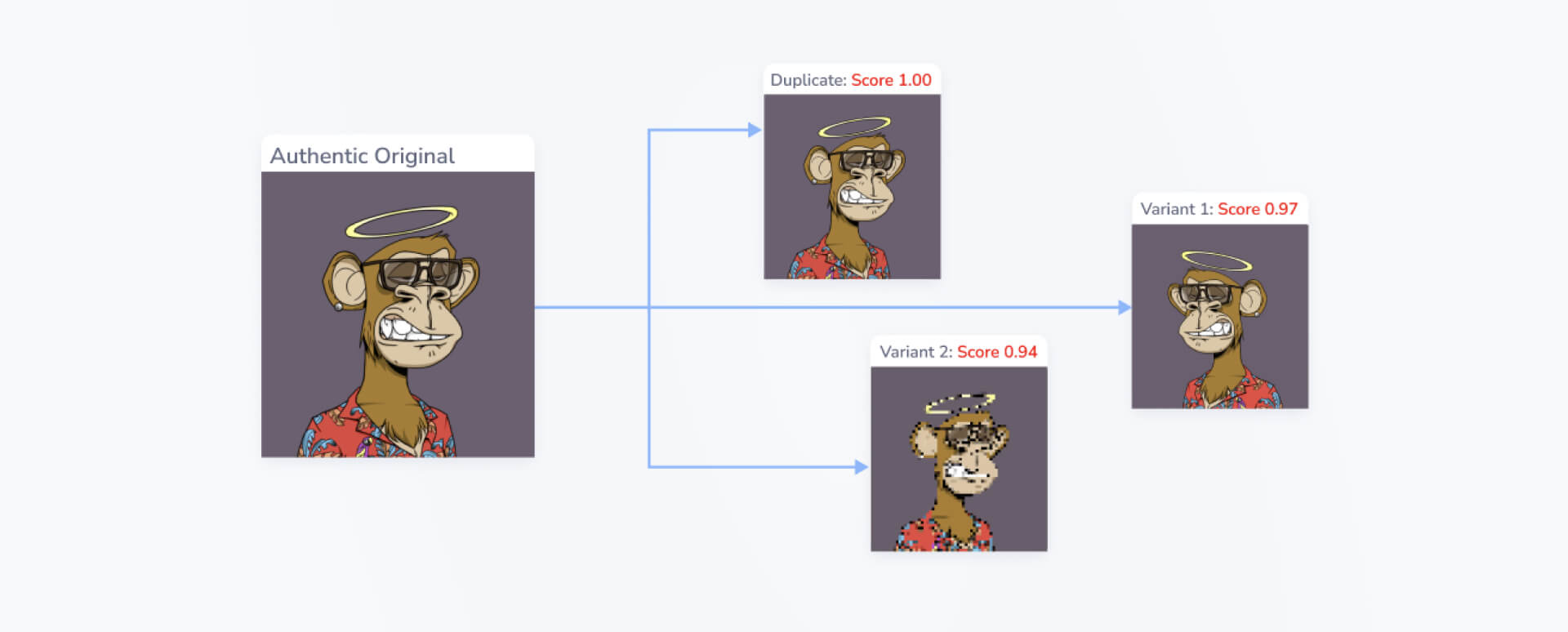NFT Search
Overview
Hive continuously crawls and indexes public blockchains such as Ethereum and Polygon to maintain a comprehensive library of existing NFT image assets. The NFT Search API enables model-based comparisons of query images to this otherwise opaque dataset. The API will return any exact visual matches to a query image along with descriptive metadata on the matching token, enabling NFT marketplaces and buyers to identify duplicated or otherwise fraudulent NFT images.

Image Comparison Model
Our models are optimized to identify exact visual matches between images. NFT Search will capture both duplicates and images with very subtle augmentations. This includes adversarial modifications such as introduction of noise, filters, and other pixel-level changes that may change the image hash but are visually imperceptible to humans. Images with visually distinct content or with noticeable augmentations will not be returned as matches.
NFT Search API
The NFT Search API allows users to submit query images directly to Hive models. When submitting comparison tasks, you must include either a publicly accessible URL to the query image or a file path for direct media uploads. Please see to our API Reference for more information on API request syntax and required data.
When a task is submitted, our models will then analyze the query image against our library of NFT image assets. The API response will include a JSON object with links (e.g., URLs, IPFS addresses) to any matching image assets, a similarity score for each match, and metadata for tokens that reference the matching images.
Response Fields
All response data are returned as strings unless otherwise specified. If multiple matches are identified, the response object will include this response data for each matching image.
Similarity Score
- Score: similarity metric between the query image and the matching NFT image asset computed by Hive models. Float value between 0 and 1. 1.0 indicates an exact match between the two images, while lower values indicate that the query image has been modified to some extent.
Identifiers for Matching Images and Tokens
- Link: a direct link to hosting location of the matching NFT image asset specified in token metadata, typically a URL or IPFS address
- Contract Address: a unique identifier for the smart contract that implements the NFT that references the matching image
- Token ID: a unique identifier for the NFT (within the contract address) that references the matching image
- Token URL: a direct link to a metadata file referenced by the NFT on the blockchain, which typically defines the link to the image asset and other descriptors
- Image Hash: a cryptographic hash of the matching NFT image asset.
- Blockchain: the name of the blockchain on which the token is located (e.g., "Ethereum," "Polygon")
Metadata for Matching Tokens
- NFT Name: name associated with the matching NFT image asset according to the metadata file hosted at the Token URL
- NFT Description: description of the matching NFT image asset according to the metadata file hosted at the Token URL
Because this metadata is read directly from the file hosted at the Token URL, the metadata fields in the response object can also include additional descriptive elements, such as attributes, an edition descriptor, etc. depending on the type of matching NFT.
Updated about 1 month ago
See an example API response object for NFT search at our API Reference page to inform how you might process our model responses.
